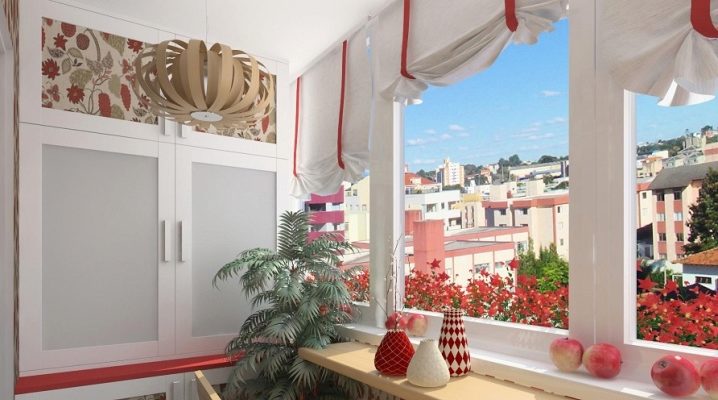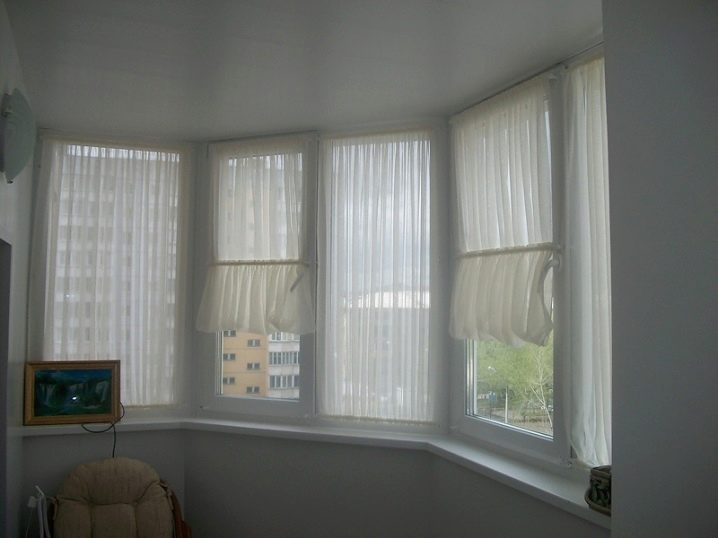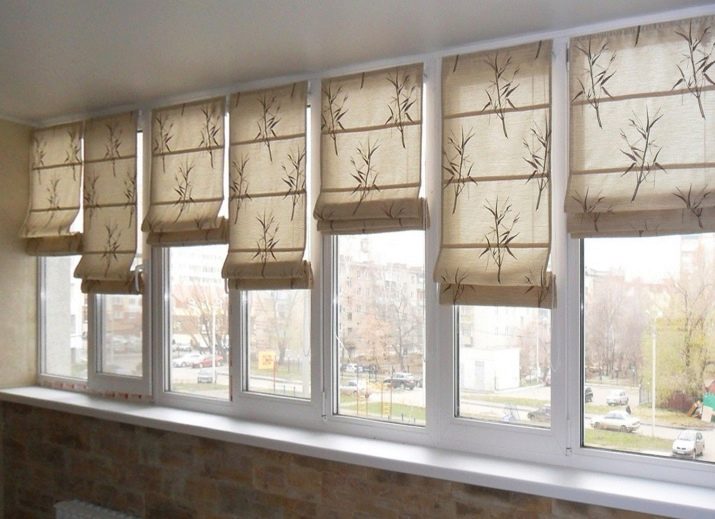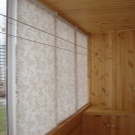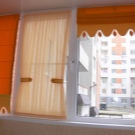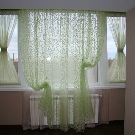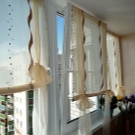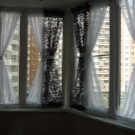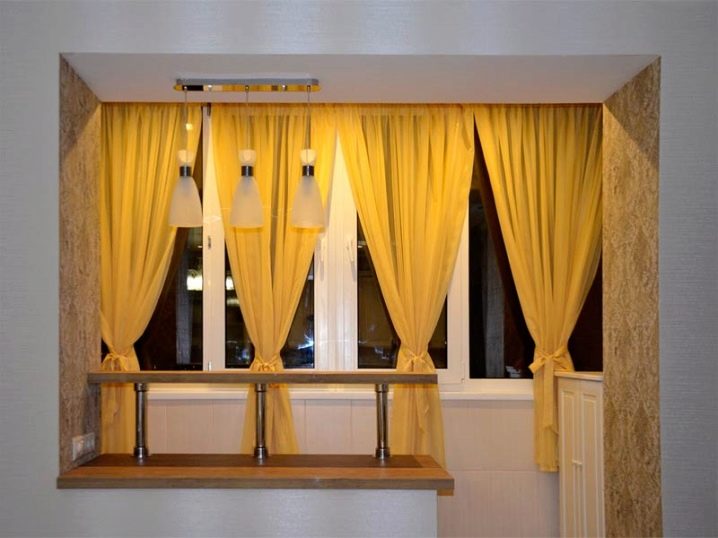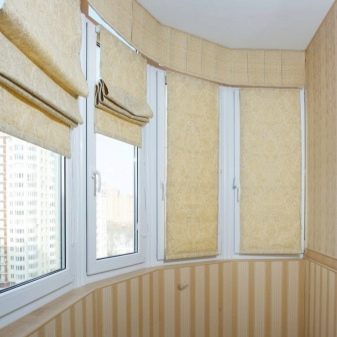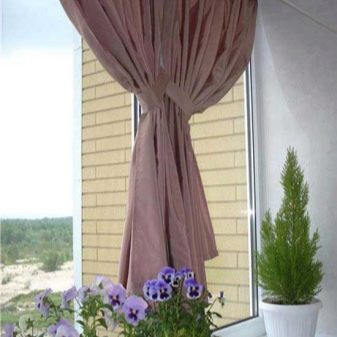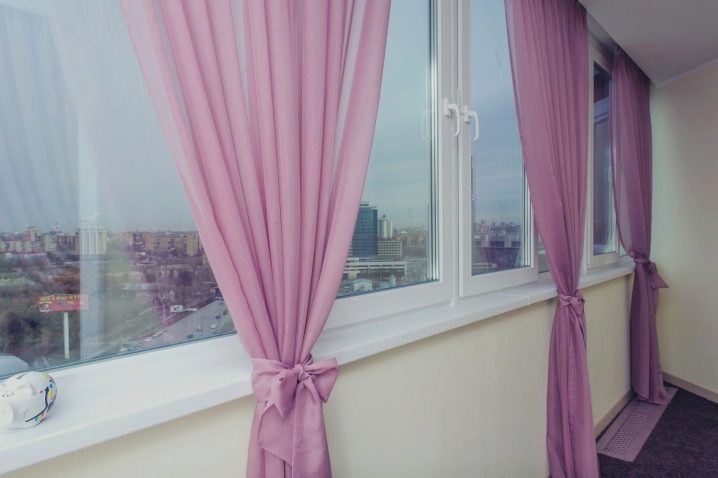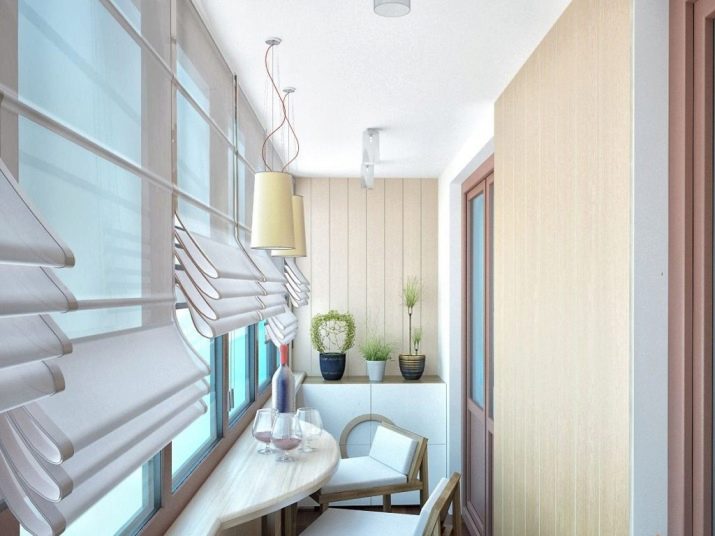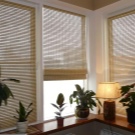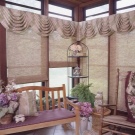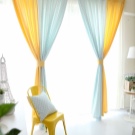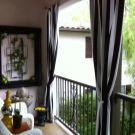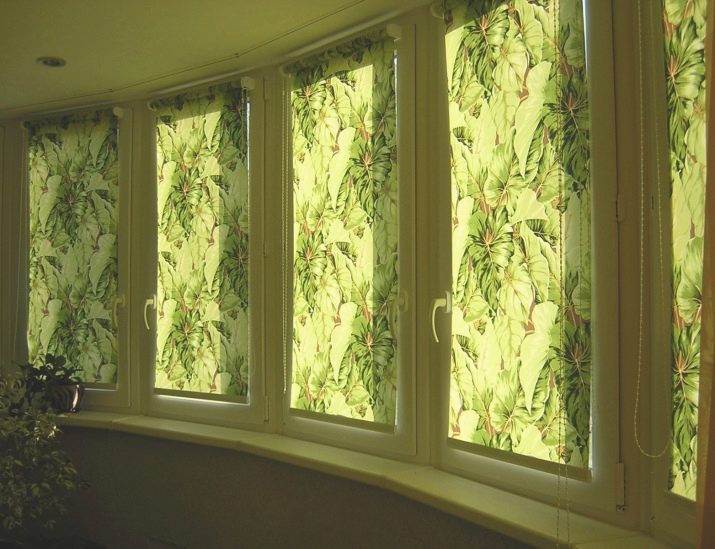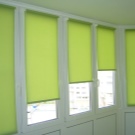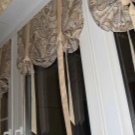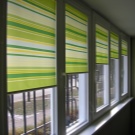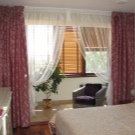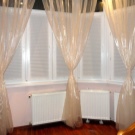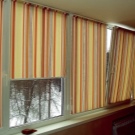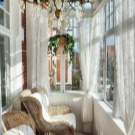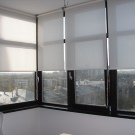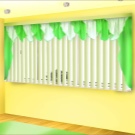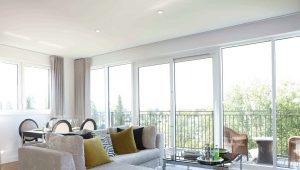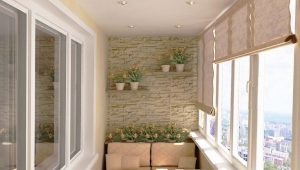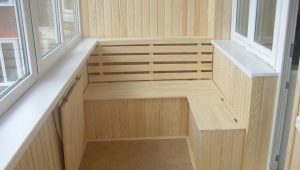Curtains on the balcony do it yourself
Balcony - an additional space in the house, which can perform various functions: from the organization of the pantry to a pleasant pastime with friends. Recently, there has been a tendency to equip it with a unique place to relax, where you can drink a cup of tea or enjoy the sunset. After finishing the walls and the selection of compact furniture, you need to pay attention to the design of the windows, because they occupy a good part of the walls.
Types of textile design
- Blinds are the easiest option. In the store you can find samples for every taste;
- Roman curtains are rectangular panels with transverse guides inserted in them, which form clear horizontal folds. A weighting agent is usually inserted at the bottom, which holds the entire canvas in the stretched state;
- Roll - a modern option for a balcony in the style of "minimalism". Material with special treatment moves along the glass with the help of a control cornice;
- Stained glass curtains. The main advantage of stained glass curtains, or as they are also called - the hourglass, is that a small amount of fabric is used for their tailoring, and high qualification is not required for their manufacture. Such curtains can be used in a variety of style decisions, in addition, they are very easy to clean;
- Classic curtains on the assembly;
- Curtains covering the bottom of the glass;
- Lambrequins, decorating the top of the openings;
- A combination of the above options is also possible.
Below are samples of various designs of balcony windows.
Suitable fabrics:
- Cotton cambric;
- Organza;
- Cotton curtains;
- Lace, openwork;
- Taffeta;
- Tulle.
How to sew your own hands
To attach the eaves, no special skills are required. The balcony curtain is simple in design and looks very impressive. Feel free to use it to decorate the loggia. Such curtains perfectly with the right selection of fabric fit into different styles. For example, "Provence", country or even a loft.
It is not difficult to make stained glass curtains, if you have skills in handling a sewing machine or the opportunity to attend a special workshop.Such curtains are mounted directly on the frame and for this purpose special mini cornices with sliding thin rods are used.
The most important thing is to correctly measure the valves for which the future product is intended. An important indicator - the distance between the upper points of the opening. It should be measured very carefully. Another important point - it is desirable to choose a flexible fabric, then you can easily achieve the soft drape. To calculate the width of the cut, the width of the future curtains should be multiplied by an assembly factor of 1.5 or 2. The coefficient depends on the density and stiffness of the fabric used.
Getting Started:
- Measurement of window frames on which the product will be mounted;
- Calculation of consumption of materials;
- Pre-ironing the fabric if necessary;
- Processing side slices directly or with finishing;
- Processing of the scenes for threading the cornice at the top and bottom;
- Making pickup (it is advisable to glue it with a special dulerin);
- Installing the eaves on the frame with screws or double-sided tape;
- Decoration of finished curtains with magnets, fabric flowers or other accessories.
How to hang without a ledge
Sometimes there is a need to hang curtains without a cornice, for this there are several ways.
- You can stretch the metal string or across the entire width of the loggia or on each sash - the method is suitable for light fabrics like tulle;
- Small curtains can be attached to the frame, including stained glass windows using Velcro Velcro. To do this, you need to fix the rigid part with a sticky layer on the plastic windows, and sew the soft part to the product;
- Attach to the glass suction cups, and then hang light curtains on them;
- You can use special hooks to which to fasten the canvas with the help of loops or eyelets.
